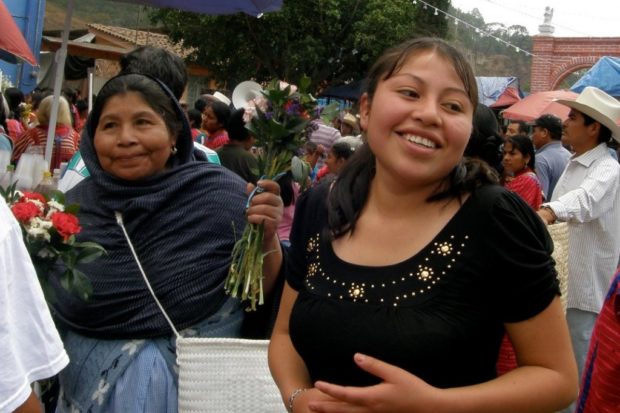
The village of San Juan Copala is a small dot located within the huge Low Mixtec region, in the state of Oaxaca, Mexico. The village is inhabited by the Triqui people, with their own culture, customs, language and event traditional dressing. The women are easy to identify, because they always wear their traditional red “huipil” handmade by themselves.
Since I was a child, I often heard from the elders in my village not to mess with the people of San Juan Copala because they were very mean and they even killed people. My grandmother Ignacia and other people from my village liked to visit San Juan Copala every year for their main saint festivities and would often tell that people kill each other. I had the opportunity to visit twice with my grandmother, and I did not personally witness any killing, but I noticed that the road to the village from the main highway was paved and also noted other well-established infrastructures not available in my village. I also noticed federal soldiers wandering around in the village. Furthermore, I heard that many people from San Juan Copala were professionals–teachers, nurses, doctors and attorneys–something that is impossible to find in any other village nearby and “that is why they can easily obtain services for the village,” I was told.
Later on, I learned about an organization established by the Triqui people that became very strong to the point that even some Mixteco people had joined to demand better services from the state government. They were effective and their demands would always be met by the way they pressured the government: blocking main roads of large cities during the marketplace days when all people from the surrounding villages come down to make their weekly purchases.
After successfully winning their demands over and over, the government searched for strategies to make them weak by forming dissenting organizations in close collaboration with other people from San Juan Copala. They started to compete among themselves for the same resources. The state and municipal governments continued playing dirty by promising economic resources and political positions to leaders, corrupting them to divert the resources they received and even to take advantage of their own people. Competing for personal power, resources and political positions at the municipal and state level, they started to assassinate the leaders and any people who raised publicly their concerns and denounced violations of human rights of the people in the region.
Tired of seeing many people being killed, in January 2007, all the organizations agreed to declare San Juan Copala an autonomous municipality and stay away from any government offers. The dirty hands of the government did not go away and violence escalated to more killings by dividing the organizations again and providing huge funding and firearms to groups and keeping them immune from any consequences. These paramilitary groups have been in charge of pressuring the Autonomous authorities and whole villages to surrender by blocking the road to any one of those villages and cutting off all basic services.
On April 27, two human rights observers were murdered by this paramilitary group using firearms that are only allowed exclusively for the use of the military. The victims were traveling in a humanitarian caravan to deliver food and medicine to the people of San Juan Copala. The human rights world responded by organizing another humanitarian caravan with food and medicine to travel to San Juan Copala on June 8, 2010. They were not able to pass because the highway was blocked with huge rocks and armed people nearby to intimidate. The state and federal government only cautioned people not to enter because it was dangerous but made no attempt to intervene and stop the suffering of children, women and men who lack food and medicine in San Juan Copala.
